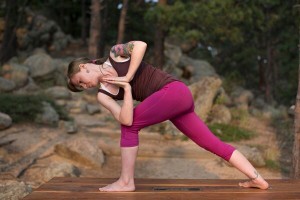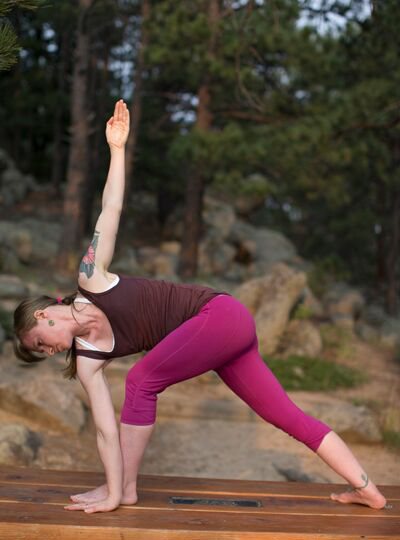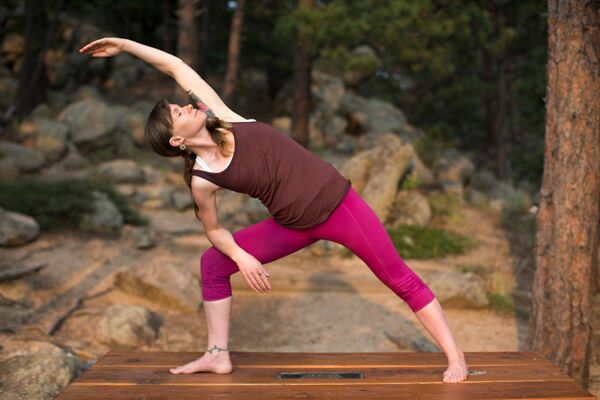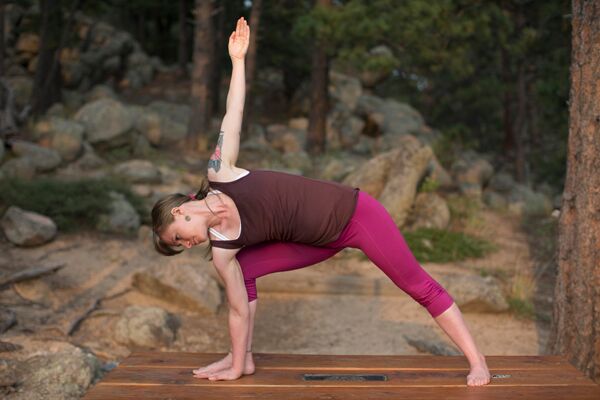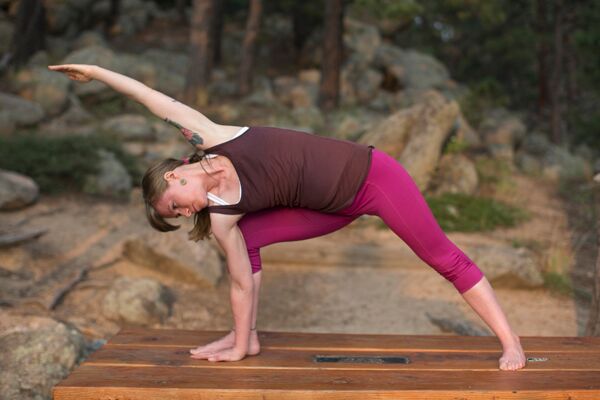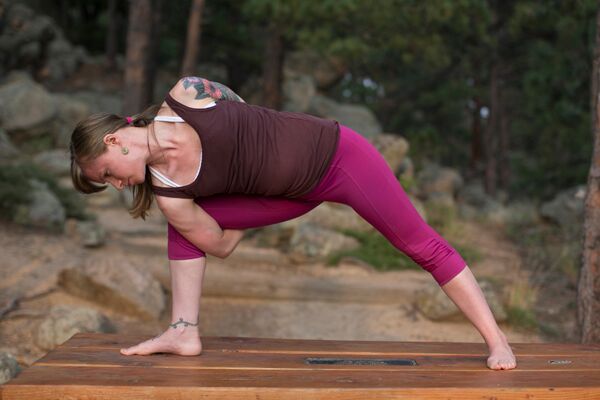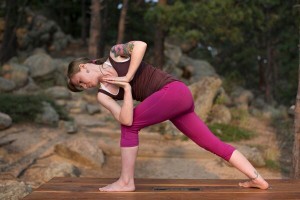 As the cold continues to settle in for the month of October, let us continue to focus on creating an internal heat through some warming Yoga postures. With our bodies not quite used to the cold environment, our systems can grow stagnant and constricted creating poor circulation, poor digestion and constipation. Utilizing warming twists such as Parivrrta Parsvakonasana, can help to prevent these obstructions and help ease you into the cooler months. The twisting postures are also a great compliment to any cleanse or detox program, as they help to flush toxins from the GI tract and increase the digestive fire.
As the cold continues to settle in for the month of October, let us continue to focus on creating an internal heat through some warming Yoga postures. With our bodies not quite used to the cold environment, our systems can grow stagnant and constricted creating poor circulation, poor digestion and constipation. Utilizing warming twists such as Parivrrta Parsvakonasana, can help to prevent these obstructions and help ease you into the cooler months. The twisting postures are also a great compliment to any cleanse or detox program, as they help to flush toxins from the GI tract and increase the digestive fire.
Parivrrta Parsvakonasana is translated as the “revolved side angle pose”. It is a static posture meaning it is typically held for several breaths, making it beneficial for the kinetic energy of Vata. Adding some movement by flowing in and out of the different variations will make it a perfect pose for combatting Kapha, as it further builds heat and reduces heaviness. The revolved motion offered in this posture reduces the Pitta since all twisting postures tend to wring out the excessive heat that builds up in the solar plexus region. However, since this is a warming posture overall, Pitta types should only stay here for a couple breaths, with the gaze down and the body soft to avoid building up tension and excessive heat in the body and mind.
Parivrrta Pasvokonasana works directly on the vital organs of the liver, gallbladder, spleen and small intestine (all Pitta organs). The twisting motion provides detoxification to these organs, promoting strength and removing stagnant energy. It also provides a powerful spinal twist, as it wring out toxins and brings fresh blood flow and energy to the spine. Therefore this can be an amazing posture to perform during a cleanse program if the energy allows. If this is too much exertion during a cleanse, a seated twisting posture such as Ardha Matsyendrasana may be a better option.
Parivrrta Parsvakonasana
- Doshic Qualities:Vata ↓,Pitta ↓, Kapha ↓ (Increases Pitta in excess due to the heat factor; Kapha types should add movement)
- Best Season for Practice: Fall and Winter
- Elemental Component: Earth and Fire
- Main Areas of Strengthening in the Body: Legs, core, spine
- Main Organs: Liver, gallbladder, spleen, small intestine
- Contra-Indications: Pregnancy; high Pitta; debility; use caution with lower back issues
Main Health Benefits
- Strengthens the core and leg muscles
- Increases digestion
- Teaches balance and stability
- Builds overall heat
- Reduces excessive heat in the solar plexus
- Promotes circulation in the body
- Strengthens and detoxifies the liver, spleen and gallbladder
- Removes tension and toxins from the spine, allowing fresh blood flow and energy
- Reduces heaviness and stagnation in the core region
- Relieves constipation
- Beneficial in cleansing programs
- Increases energy and confidence
Step-by-step Instructions
- Begin by coming into the un-revolved version of this posture, Parsvakonasana. To get into this, step the left foot directly behind the right so there is about a legs distance between the two feet. The right foot in front is pointed straight forward, while the left back foot is flat to the ground at a 45 degree angle (same as warrior one stance). From here, bend the right knee directly over the right foot; keep the back leg straight and the back foot rooted into the earth. Place the right elbow onto the top of the right thigh and open up through the left side body as you bring the left arm overhead. This is the original Parsvakonasana (see picture #2 below).
- Before moving into the twist, double check the alignment, making sure the feet are pointed in the proper direction and the front right foot is in line with the left back ankle. You should be able to draw a straight line between the two.
- Once you have proper alignment and feel comfortable here, begin to lower the left arm, spiraling it down to the outside of the right foot. Place the left palm flat to the ground so the fingers are pointed forward and in alignment with the right foot.
- Bring the right arm straight overhead, allowing openness in the right shoulder and a deeper twist. The right arm is completely straight and perpendicular with the ground. Make sure the fingers are together in a straight line and not sprawled out.
- For beginners as well as Pitta and Vata types (or if you do not know your dosha type), keep the gaze down to the ground. For Kapha types or more advanced Yogis, if you feel comfortable carefully bring the gaze to look up to the sky.
- Breath deep into the abdomen. While holding the posture, always keep high integrity of the alignment by checking in with your posture. Make sure the back foot is rooted to the ground and bearing equal weight to the front foot.
- Hold this twisted stance for 5-10 long, deep breaths.
- If you would like to practice an arm variation, try the same posture with the palms at the heart center (prayer position). Use the left elbow to bring you deeper into the twist by pushing it against the outside of the right thigh (see picture #1 below).
- After you have held the posture for several breaths, slowly come out the way you came in by moving through the original Parsvakonasana.
- Step the left foot forward to meet the right and take a few breaths here in mountain pose (tadasana).
- From here, take the right leg back and repeat the same steps on the opposite side. Always remember to practice the opposite side for an equal amount of time for all postures. Failing to do this can lead to misalignment of the body.

